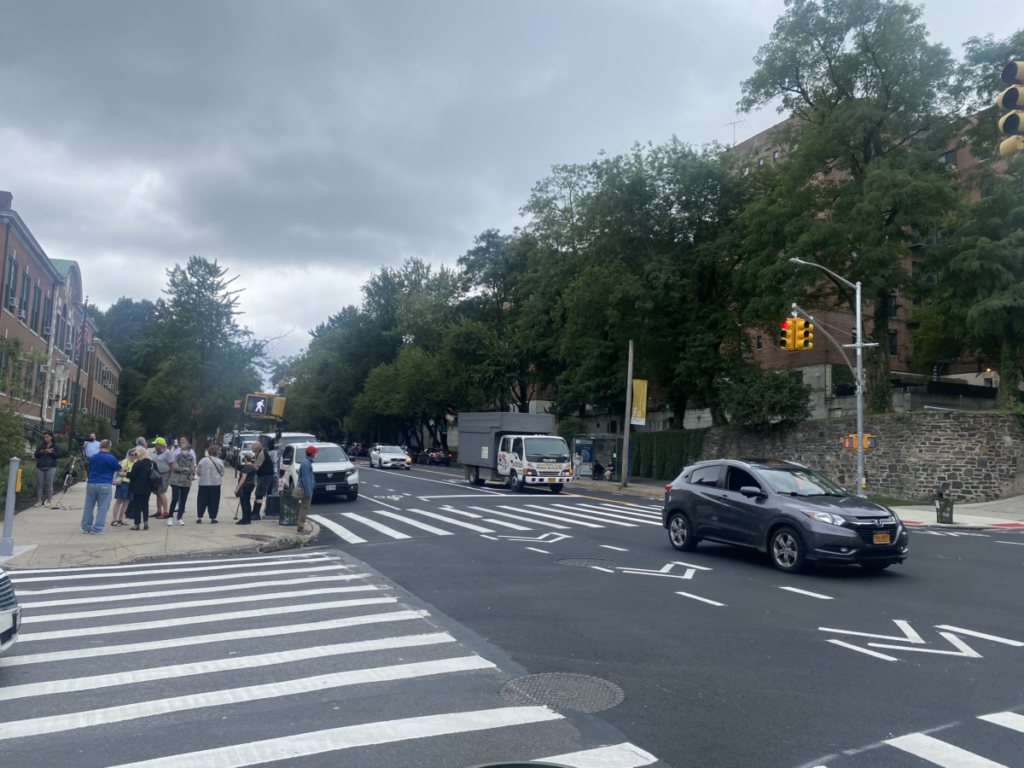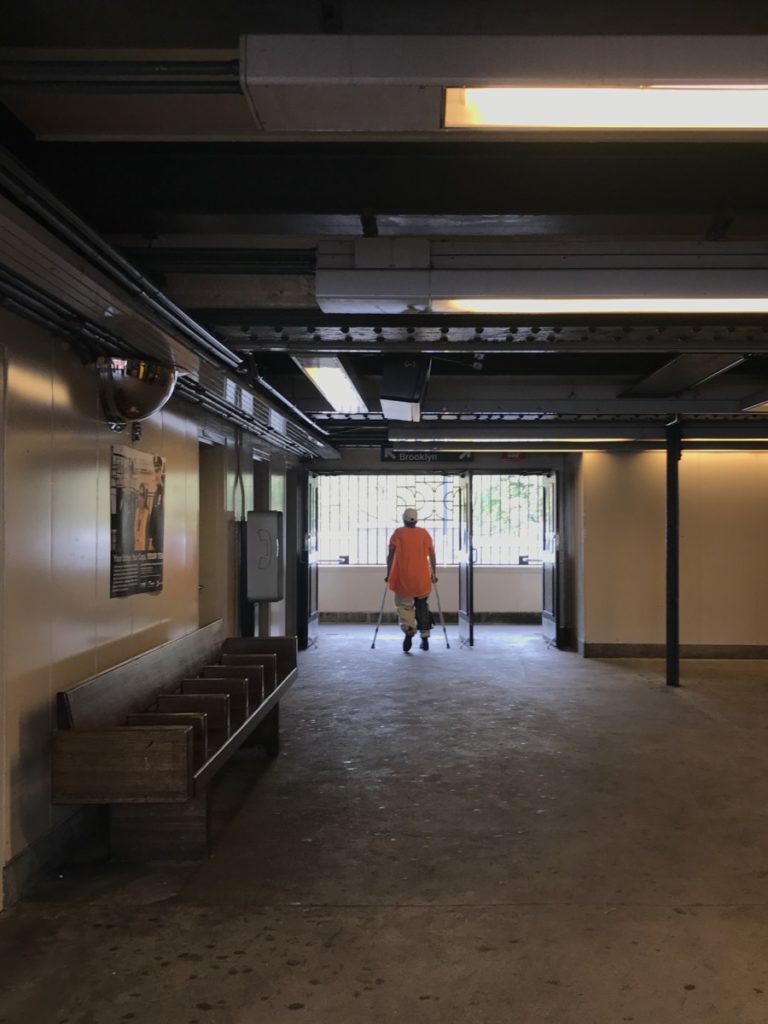
Earlier this month, the Department of Transportation took Riverdale Avenue and put it “on a diet.” The project known as a “road diet” transformed the avenue from a two-lane traveling road to one. A bike lane and a turning bay were added to the road that stretches from West 254th to West 263rd Street.
The project was the result of efforts that started back in March of this year between DOT and local elected officials, DOT wrote in an email.
From 2015 to 2019 there were three traffic fatalities along the stretch and 66 total injuries, according to DOT. They added that two of these fatalities were senior-aged pedestrians which demonstrated the need for a safer street.
However, residents are concerned about the new project which was completed on Sept. 5. because of increased traffic, double parking during school hours and congestion due to sharing the lane with city buses.
The Traffic and Transportation Committee of Community Board 8 held a meeting on Sept. 15 where residents showed up to voice those concerns.
Riverdale resident, Eric Miooan, was one of several who spoke out against the road diet.
Taking out a lane is “like cutting off somebody’s leg and saying you’ll get used to it,” Miooan said.
Community Board 8 rejected DOT’s proposal due to not receiving enough traffic studies to change the road, according to Community Board 8 meeting minutes. The board also said that the plan didn’t take into account merging traffic and parking.
Across the nation, road diets have been known to help reduce speed and accommodate other modes of traffic like bicycling, according to the federal highway administration.
DOT proposed that the 60-foot-wide road be divided into smaller sections. The road is still the same width but a lane for bikes has been added and a turning bay, leaving a smaller amount of room for cars.
At the Sept. 15 meeting, Assemblyman Jeffrey Dinowitz (D) spoke of how shocked he was that DOT delivered the new road so quickly.
“It’s an absolute insult that the DOT could have moved this quickly,” Dinowitz said.
He said that it normally takes the department months to complete projects like this but they finished the road diet in eleven days.
First Deputy Commissioner Margaret Forgione of DOT said they got the project done quickly because the department wanted it finished before children in the community went back to school.
On the other hand, Dinowitz said he’s been pushing for left turn signals on Riverdale Avenue for years now.
“Put in the left turn signals, it doesn’t take a brain surgeon to figure out the battle in the flow of traffic and make the decision to put in left turn signals,” Dinowitz said.
There was a protest on Riverdale Avenue on Sep. 7 after the project was finished, where City Council Member of District 11, Eric Dinowitz (D) called on DOT to take a look into community concerns.
“We’re calling on the DOT to take into account actual community concerns and to be a collaborative partner in projects or proposed projects, instead of completely ignoring the community,” Dinowitz said.
DOT Commissioner Ydanis Rodriguez attended the traffic and transportation meeting on the 15th to listen to the community’s concerns and get feedback.
One member Yesenia Jimenez explained how she almost got into a car accident earlier that week because people aren’t used to the new road.
Laura Spalter, Chairperson of CB8, said she got a phone call from the board office earlier that week that two cars had gotten into a sidewalk accident, and were found up on the curb of the Skyview Shopping Center on Riverdale Avenue between 258th and 259th street because of the new conditions.
“If somebody had been walking on the sidewalk they would be dead,” Spalter said.
Spalter also spoke at the protest earlier this month saying that the Traffic and Transportation Committee voted against the plan repeatedly.
DOT said that they would come back in a year and reassess—if they see no changes or an increase in accidents at that time, then they’ll “go from there.”
DOT has done similar projects in the Bronx that have shown to reduce total injuries between 22 percent and 47 percent, and citywide road diets have reduced deaths and serious injuries by 30 percent on average, according to research from DOT.
“So we do expect to see that here and we will be monitoring it,” Forgione said.
Shawn Garcia, Bronx and Uptown Organizer for Transportation Alternatives, is in support of road diets across the city and responded to a tweet from the commissioner on Sept. 15 just hours before the meeting.
“Appreciate the commissioner @ydanis pushing forward this work, especially despite the small anti-road diet forces in Riverdale. The racial and class equity issues here are so apparent.”
In an interview with The Bronx Ink, Garcia said that Community Board 8 isn’t representative of Riverdale as a whole.
“We don’t want to wait for the next person to die or a child to get hit by a car,” Garcia said.









